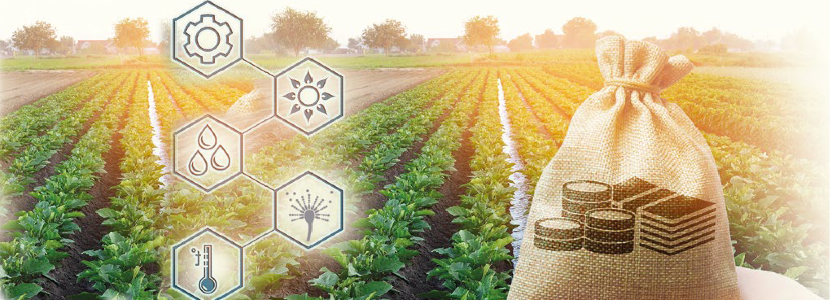 02 Aug 2022
02 Aug 2022
Mycotoxin neutralization through the use of adsorbent substances presents a potential alternative to deal with a major food security problem.
According to data provided by FAO, more than 25% of agricultural production is contaminated by mycotoxins. In the US alone, this represents economic losses of around one billion euros a year.
In addition to this, large quantities of basic food products are spoiled by mycotoxins:
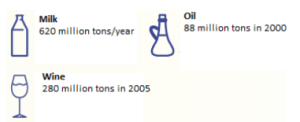
As a result, many countries have adopted severe regulations to limit mycotoxin exposure. This has had an impact on on crop and animal markets.
![]() Mycotoxins are toxic alkaloid compounds, produced by fungi belonging to the following groups: Aspergillus, Fusarium, Penicillium, Claviceps and Alternaria (Jaynes et al., 2007; Huwig et al. , 2001).
Mycotoxins are toxic alkaloid compounds, produced by fungi belonging to the following groups: Aspergillus, Fusarium, Penicillium, Claviceps and Alternaria (Jaynes et al., 2007; Huwig et al. , 2001).
Mycotoxins can contaminate crops in two ways:
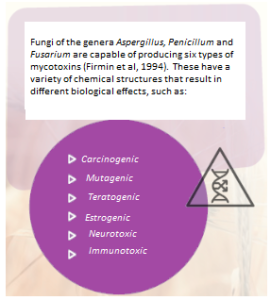
Among mycotoxins,aflatoxin B1 and M1, secreted in milk, have been shown to be the most toxic, with carcinogenic effects in animals and humans.
![]()
However, currently there are no large-scale practical solutions to combat contamination with fungal by-products in food, using low-cost methodologies.
One of the most promising approaches to solving the mycotoxin problem is the addition of non-nutritive adsorbent materials to food batches, to control gastrointestinal absorption of these fungal metabolites.
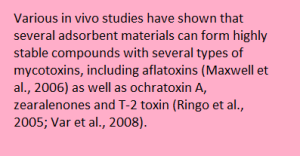
 This is achieved with the addition of sequestering agents such as zeolites, bentonites, kaolins or hydrated aluminosilicates of sodium and calcium in animal diets. [register]
This is achieved with the addition of sequestering agents such as zeolites, bentonites, kaolins or hydrated aluminosilicates of sodium and calcium in animal diets. [register]
Methods of use of adsorbent materials
The main physicochemical and structural characteristics which affect the reactivity of adsorbent materials are described below:
Results and Analysis of adsorbent materials
First group: siliceous inorganic adsorbents
This group of materials consists of derivatives of aluminosilicates and clays.
Clay is a granulometric term for those materials with a particle size less than 2 microns.
Today, a great effort is made to study both natural and synthetic clay minerals, in order to understand their behavior and develop tailor-made solutions in different problems, using clay minerals, since these have excellent possibilities in the field of biosciences.
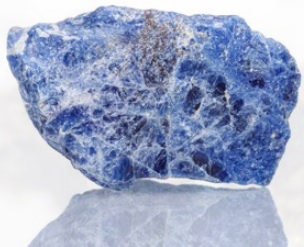
In particular, smectites have been used for various applications. For agriculture and environmental applications these are used within animal feed to promote anti-caking effects, as pelletizing adjuvants or as additives to promote feces consolidation(Ferrario et al. , 2000).
They are also used as an adsorbent for gastrointestinal gases and mycotoxins, or cyanobacterial hepatotoxins(Huwig et al., 2001).Even the inactivation of viruses and bacteria through adsorption is being investigated(Auerbach et al. , 2004).
Other siliceous materials: materials such as diatomaceous earth (diatomite or Kieselgurh) can be included.
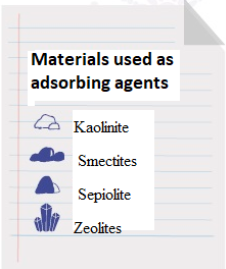
Figure 1. Structural scheme of the Zeolite
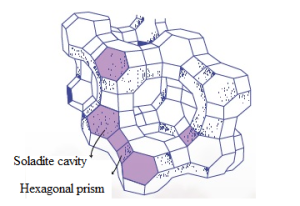
Images taken from the International Commission of Natural Zeolites.
Second group: activated carbon adsorbents
Under this generic term, a family of carbonaceous adsorbents/adsorbents of high specific surface area and large number of internal pores is included. Figure 2 shows the ultrastructure of this material in an SEM image.
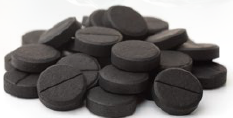
There is a wide variety of activated carbon products that show different characteristics, depending on the starting material and the activation technique used in their production.
Figure 2. Activated carbon SEM micrograph.
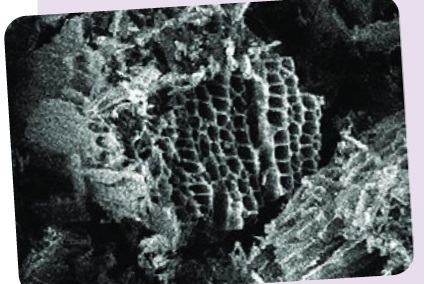
Third group: adsorbents based on yeast cell wall extracts
The main components of yeast cell walls (S. Cerevisiae) are the β-glucans, glucomannans, and mannoproteins (Figure 3) (Kogan and Kocher, 2007).
About 75% of the dry weight of the cell wall of yeasts is made up of polysaccharides
The cell wall, a shell that is located on the outside of the cell membrane, has two sheets:
![]() The interior provides rigidity and determines the morphology, and is formed by the 1.6 and 1.3 β-D-glucans complexed with chitin;
The interior provides rigidity and determines the morphology, and is formed by the 1.6 and 1.3 β-D-glucans complexed with chitin;
![]() The exterior, formed by mannoprotein fibers, determines the surface properties of the cell (Osumi, 1998).
The exterior, formed by mannoprotein fibers, determines the surface properties of the cell (Osumi, 1998).
Most of the mannoproteins are bound to the inner lamina of the glucan. Glucomannans and mannoproteins are responsible for interactions with the external environment. The β-glucans consist of glucose units linked by β-1.3 and β-1.4 bonds according to Kogan and Kocher (2007) (Figure 3).
Figure 3. Illustration of the composition of yeast cell walls.
 Taken from M. Osumi, 1998.
Taken from M. Osumi, 1998.
The mixed matrices of cellulose and β-glucan are chemically similar, as they consist of glucose units linked by β bonds, but differ greatly in their physico-chemical properties:

Conclusion
It is concluded that charge movement through the aromaticity in mycotoxins’ chemical structure, especially for the functional groups where the magnitude of dipoles is greater, as in carbonyl groups, are mainly responsible for the adsorption of these biomolecules on the surface of adsorbent materials.
The significant results obtained from yeast cell wall extracts are due to the macromolecule size of β-glucans in solutions. This allows them to act as mycotoxin sequestering agents.
As for inorganic materials, the homogeneous distribution of adsorption points and the low activity of ionic species favor the selective retention of mycotoxins against other nutrients of lower molecular weight.
Among silicates, sepiolite, with high specific area, offers the highest expectations.
[/register]
Subscribe now to the technical magazine of animal nutrition
AUTHORS
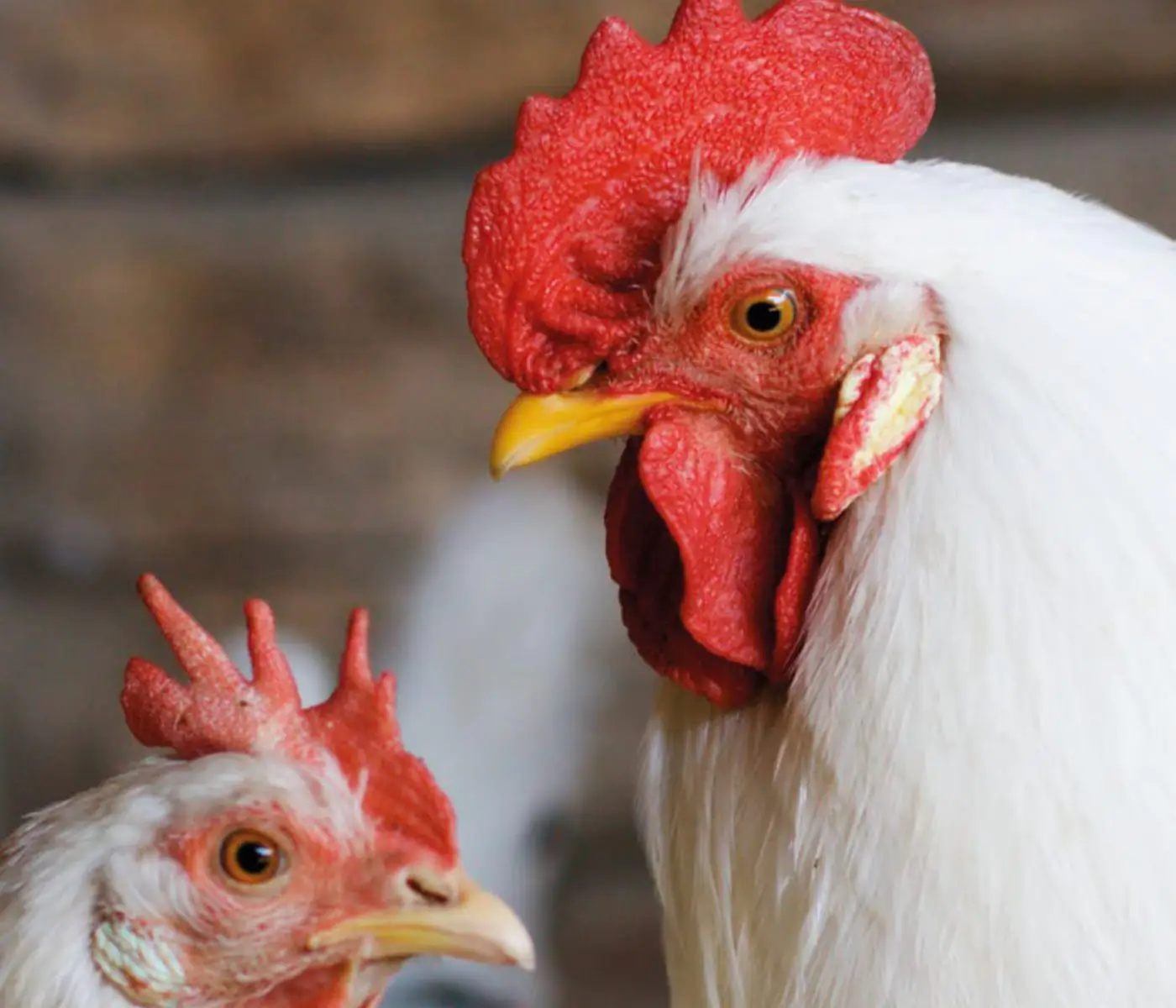
Nutritional Interventions to Improve Fertility in Male Broiler Breeders
Edgar Oviedo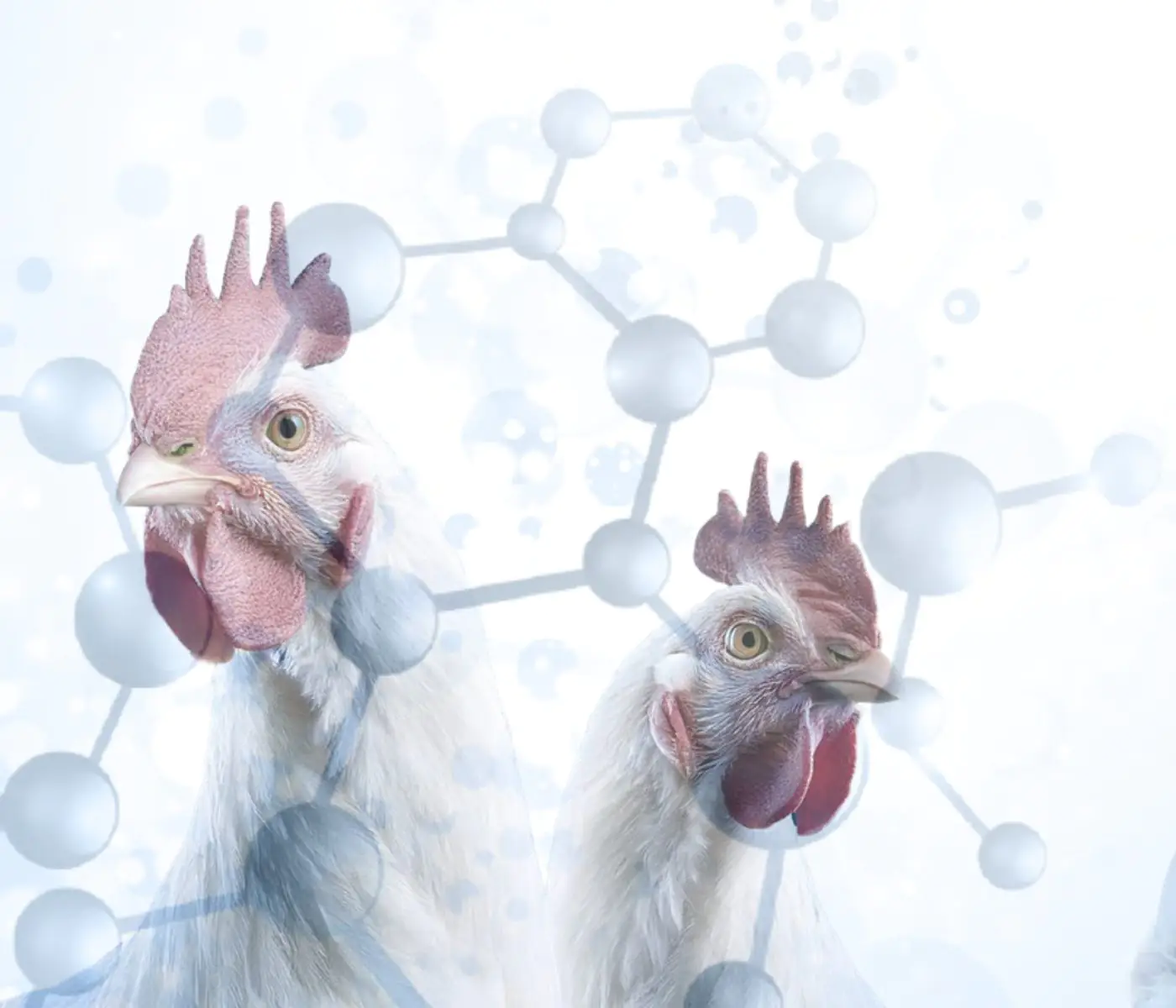
The Use of Organic Acids in Poultry: A Natural Path to Health and Productivity
M. Naeem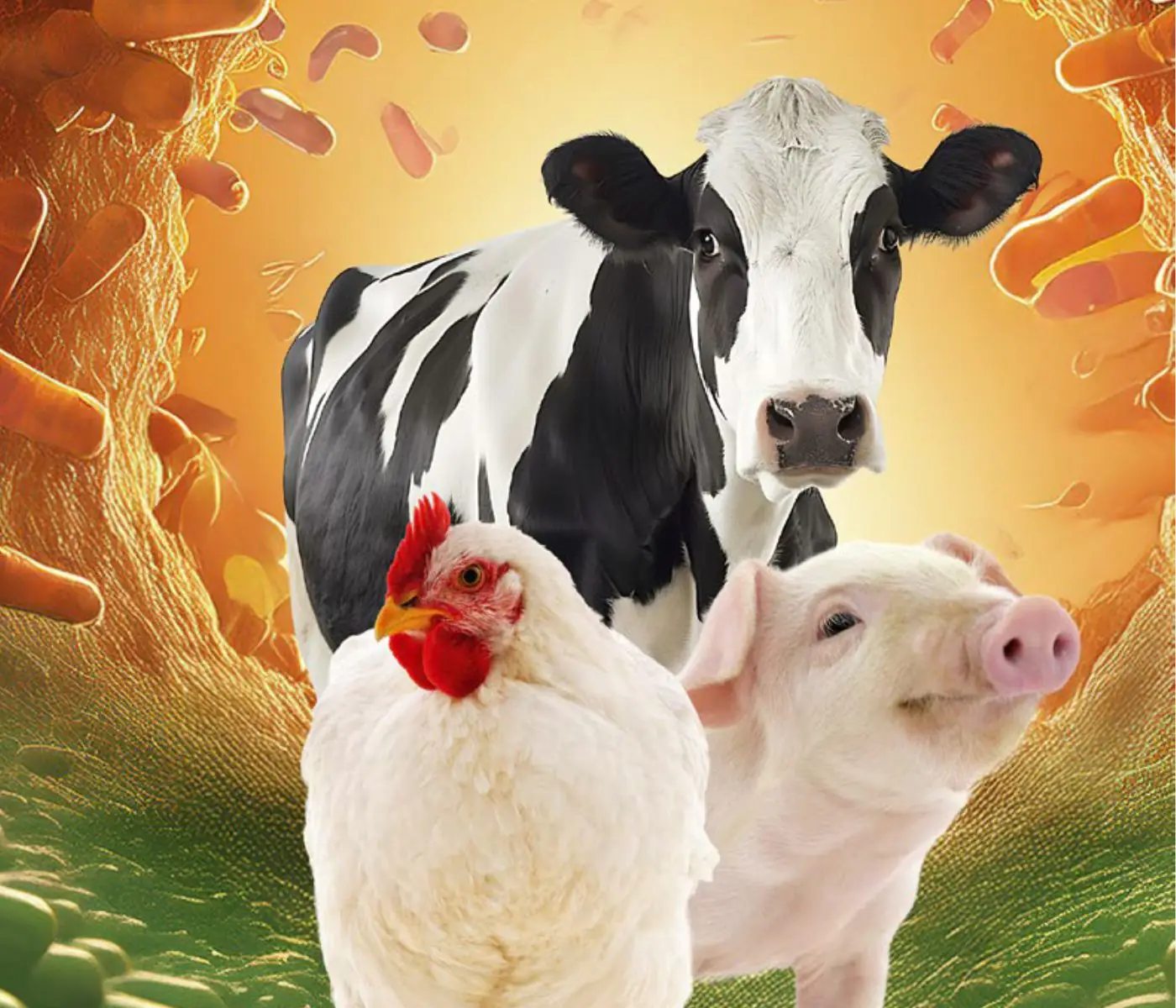
Synergistic Benefits of Prebiotics and Probiotics in Poultry, Swine, and Cattle
Gustavo Adolfo Quintana-Ospina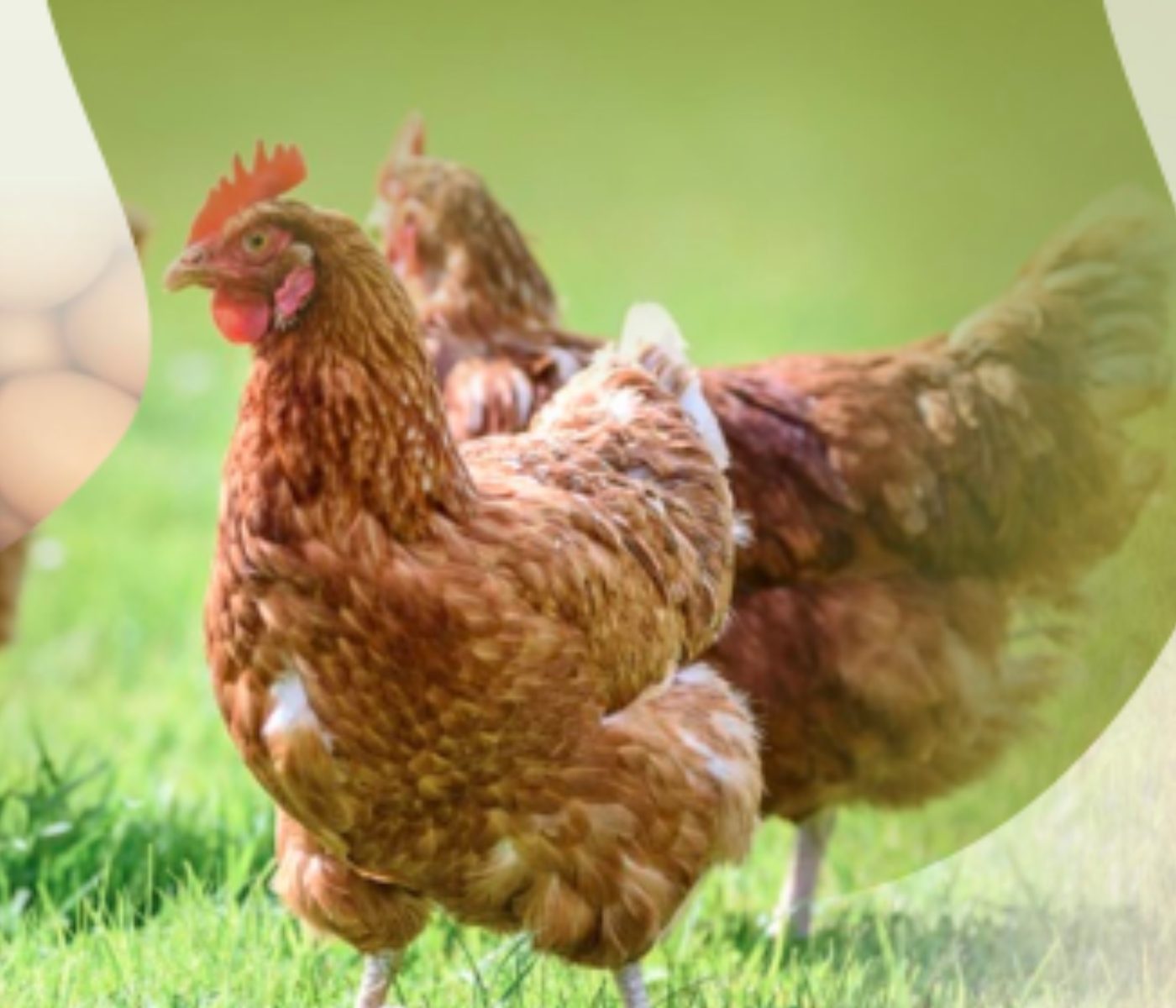
Hybrid Rye Potential in Laying Hen Feed Rations
Gwendolyn Jones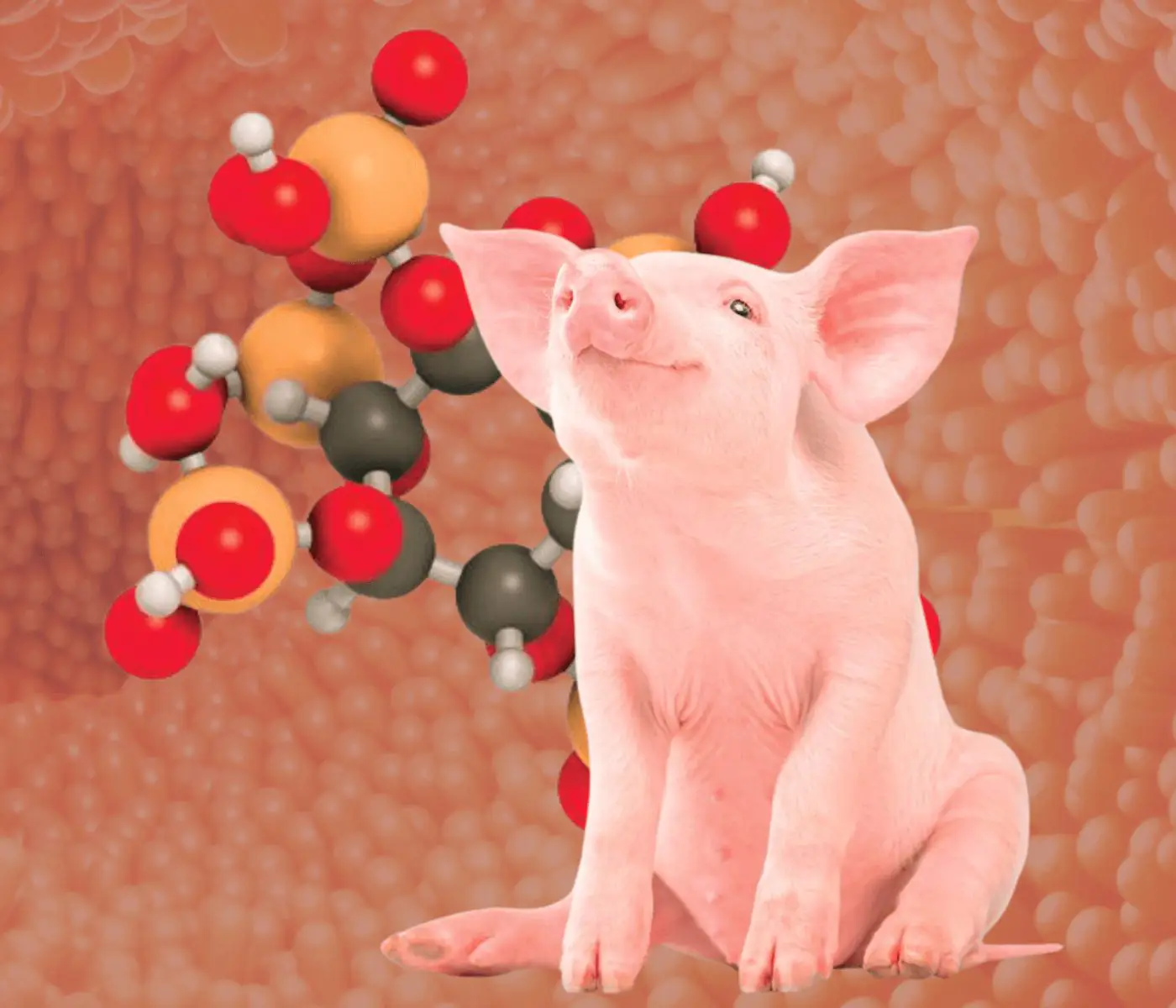
A day in the life of phosphorus in pigs: Part I
Rafael Duran Giménez-Rico
Use of enzymes in diets for ruminants
Braulio de la Calle Campos
Minerals and Hoof Health in the Pregnant Sow
Juan Gabriel Espino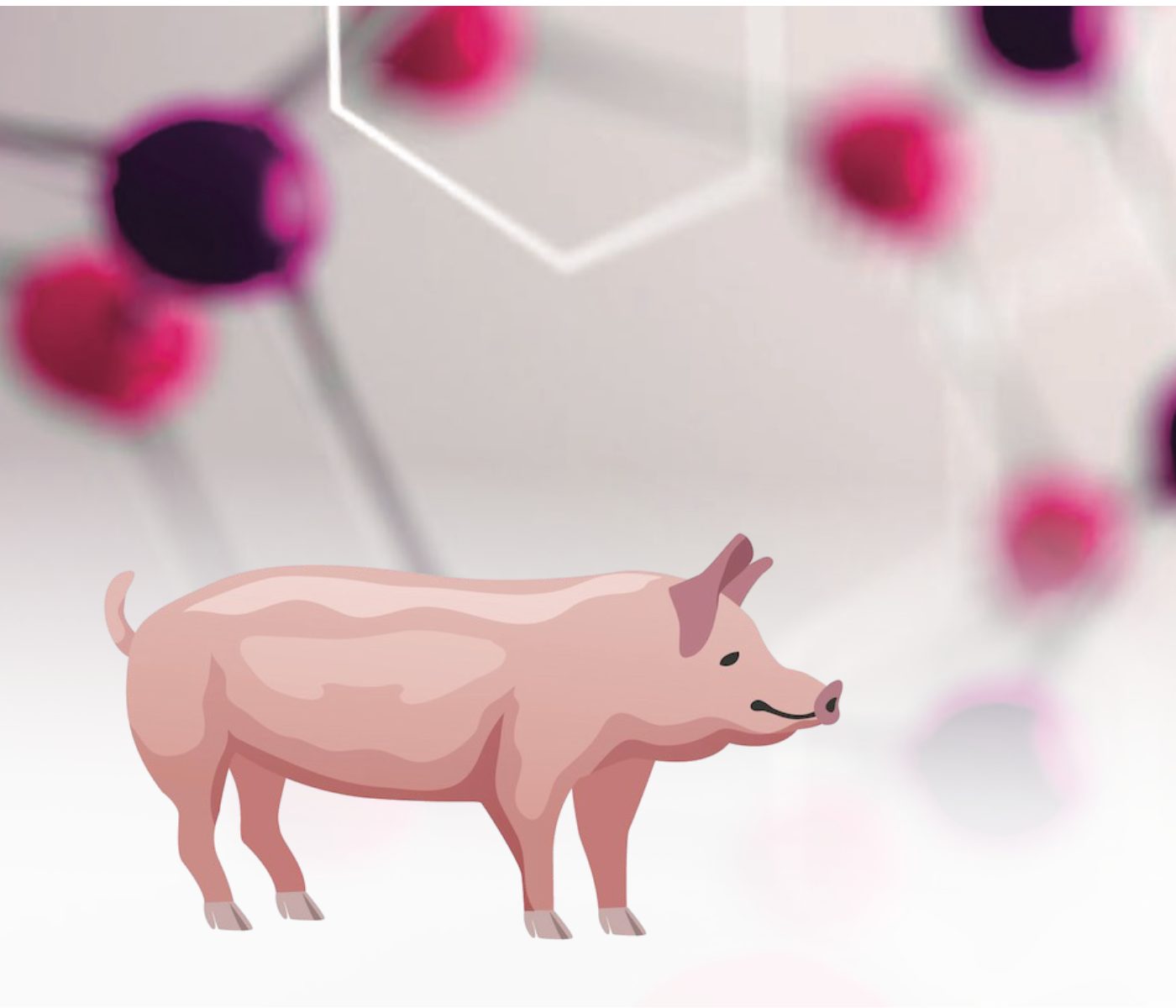
Impact of Oxidized Fats on Swine Reproduction and Offspring
Maria Alejandra Perez Alvarado